Camshaft runout
Install the camshaft on a flat surface on two prisms with journals #1 and #5.
Install the indicator probe vertically on neck #3.

Rotate the camshaft by hand to one side and measure the runout from the deflection of the indicator needle.
The camshaft runout is equal to half the value of the indicator reading.
- Limit runout: 0.05 mm
Camshaft lobe height
Measure the camshaft lobe height with a micrometer.
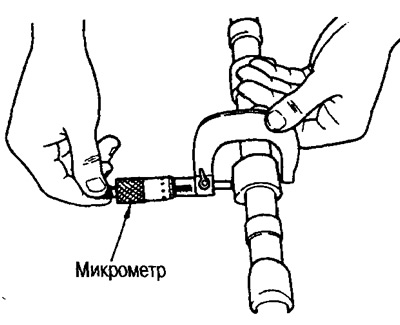
Standard Height:
- Intake: 36.787 + 0.095mm
- Exhaust: 37.404±0.095mm
Limit wear:
- Inlet: 0.2mm
- Outlet: 0.2mm
Lubrication clearance in the camshaft journals
Camshaft journal outer diameter
Using a micrometer, measure the outside diameter of the camshaft journal.
- Standard diameter: 27.935-27.955mm
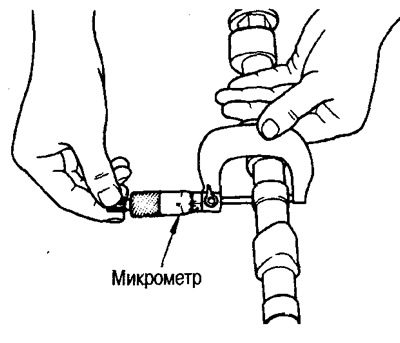
Camshaft bracket inner diameter
Tighten the camshaft bracket bolts to the correct torque.
Measure the inside diameter of the camshaft bracket with an inside gauge.
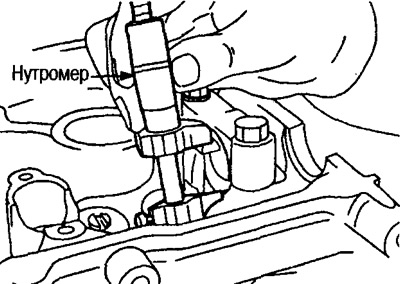
- Standard diameter: 28.000 - 28.021 mm
Calculation of the lubrication gap in the camshaft journals
(Lubrication gap) = (Camshaft bracket inner diameter) - (Camshaft journal outer diameter)
- Standard gap: 0.045-0.086mm
- Limit clearance: 0.15 mm
If the oil clearance in the camshaft journals is greater than the specification, recheck the camshaft bracket ID, camshaft journal OD and, if necessary, replace the cylinder head assembly or camshaft, or both.
Note: The camshaft brackets are one piece with the cylinder head and therefore cannot be replaced individually.
Camshaft end play
Install the indicator in the direction of the stop to the front end of the camshaft. Measure the end play by moving the camshaft back and forth in the axial direction.
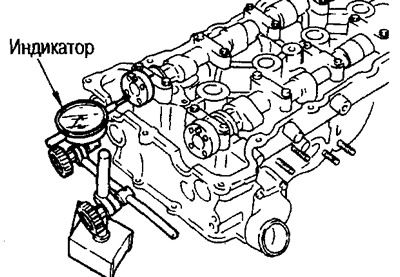
- Standard backlash: 0.055-0.139mm
If the play is greater than the specification, replace the camshaft and measure again. If the indication again differs from norm, replace a head of cylinders.
Visual inspection of the rocker arm
Check for wear in the pivot area, camshaft lobe and valve contact surface.
Make sure the bearing rotates freely.
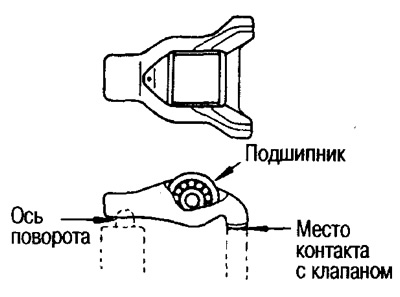
Visual inspection of the valve lifter
Make sure that the friction parts of the rocker arm and the surface of the cylinder head are not damaged or worn.
Camshaft sprocket runout
This check is performed after measuring the end play of the camshaft. Tighten the camshaft sprocket to the required torque.
Use a dial gauge to measure the runout of the camshaft sprocket.
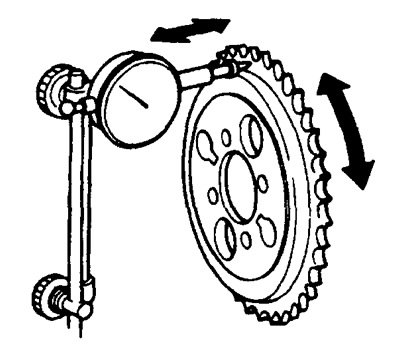
- Limit runout: 0.25 mm
Valve lifter clearance
Outer diameter of valve lifter
Using a micrometer, measure the outer diameter of the hydropusher.
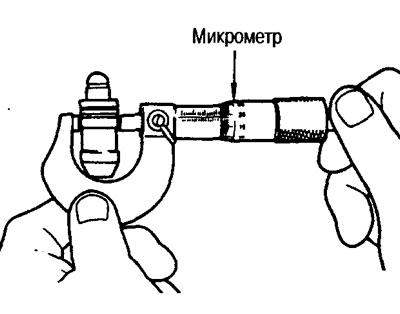
- Standard diameter: 16.980 - 16.993 mm
Bore diameter for valve lifter
Using an inside gauge, measure the diameter of the hole for the valve lifter in the cylinder head.
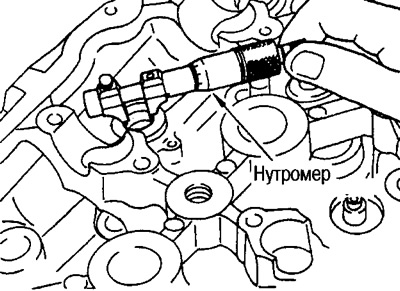
- Standard diameter: 17.000- 17.020 mm
Valve lifter clearance calculation
(Pusher gap) = (Hole diameter for hydraulic pusher) - (External diameter of hydraulic pusher)
- Standard clearance: 0.007 - 0.040 mm
- Limit clearance: 0.073 mm
If the values obtained differ from the nominal values for the inside and outside diameters, replace the valve lifters or cylinder head, or both.
Checking the presence of air in the hydraulic pusher
After installing a new valve lifter, and also, if extraneous sounds are heard during engine operation, check if there is air inside the hydraulic pusher.
Press firmly on the rocker and measure its movement. If the stroke is more than 1 mm, perform the operations to remove air from the hydraulic pushers using the method described below.
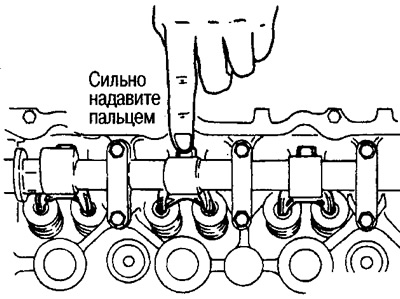
1. Remove the valve lifter, place it in engine oil and, pressing the plunger with your fingers, lightly press the locking ball with a thin rod.
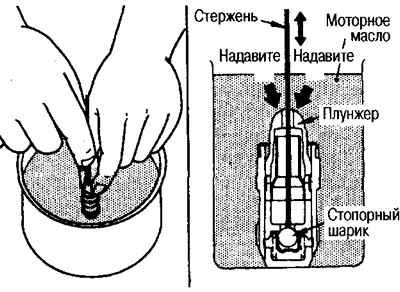
2. If the plunger stops moving, then the air has escaped.
3. If air cannot be released, replace the valve lifter.
Attention:
Do not damage the stop ball.
Do not disassemble the valve lifter.